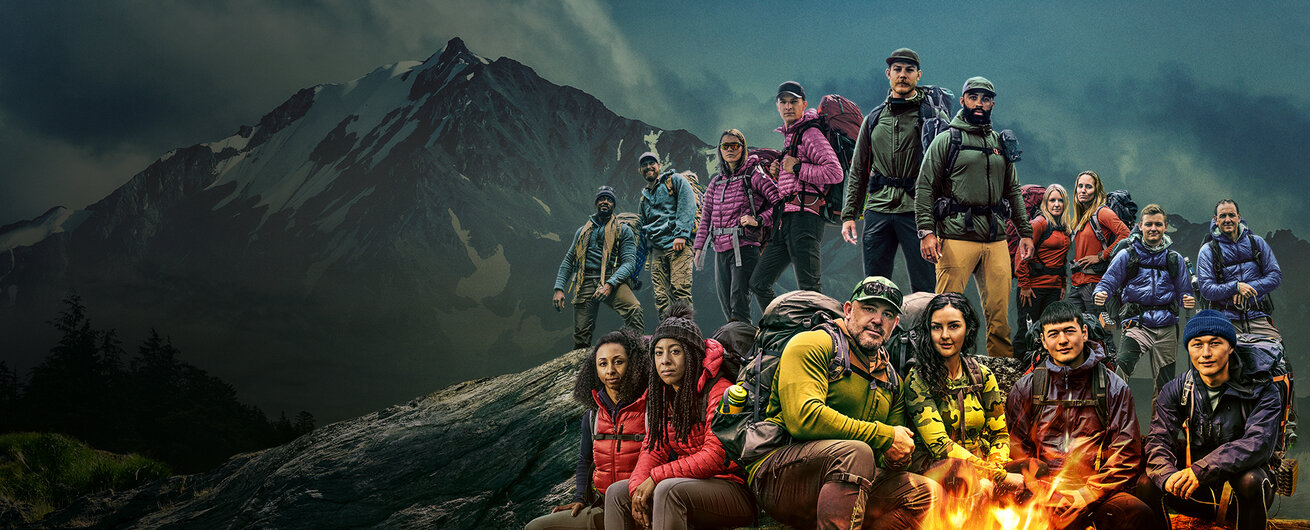Create a free profile to get unlimited access to exclusive show news, updates, and more!
Jeff's Ax Mishap & More: What Are The Most Common 'Race to Survive: Alaska' Injuries?
The contestants are going to take a lot of bumps and bruises this season. What should we expect?

USA Network's "Race to Survive: Alaska" isn't messing around in making a name for itself as a one-of-its-kind survival competition series. The 40-day, 100-mile extreme outdoors series drops eight teams of elite adventurers into the Alaskan outback and gives them six days to get to the finish line for the leg, or get eliminated. In Episode 1, Alaska-based competitor Esther Sanderlin proved just how taxing her home state's volatile weather can be when she succumbed to the unrelenting heat on Day One. Overcome with extreme dehydration, Sanderlin was eventually taken by helicopter out of the race to get needed medical attention.
RELATED: The Best Wilderness, Survival Movies To Get You Ready For 'Race to Survive: Alaska'
And the drama continues in Episode 2, "Feast or Famine," where audiences witness the individual teams reach the end of the leg and then have to survive off the land with no assistance for up to five days. While most would assume that the greatest threat of injury would come from the race course, or even the bespoke Adventure Challenges, contestants such as Jeff Leininger (53) proved that downtime can be just as dangerous.
As an experienced adventure racer, Jeff is the season's oldest racer, which implies wisdom. Jeff is already testing that adage. Let's just say that being stubborn or set in your ways can be quite an impediment as well, as his 21-year-old son, Hunter Leininger, is learning at their Survival Camp. At one point, Jeff makes the less-than-stellar choice to sharpen their field axe and then use it — uncovered — as a makeshift hammer to nail in a tarp stake. The result is a slice in his finger and some on-the-spot medical attention from fellow contestants — and doctors — Robin Moore and Elizabeth Killham.
Listen, hunger and exhaustion can make you do crazy things, so we can give Jeff some grace. But his injury gave us pause in terms of wondering what are the everyday maladies that outdoor adventurers can expect out on the trail, especially in Alaska?
"Race to Survive: Alaska" producer Alan Bishop told USA Insider that minor injuries are a given for anyone going into territory that isn't cleared and graded for the masses with well-walked and serviced trails. In particular, foot injuries are the most common including trench foot, blisters, turned ankles, and sprains.
"In the wild, you must take care of your feet," Bishop emphasizes. "If you get to the point to where you can't make forward progress, you will end up in trouble. I've always treated my feet well. At the first sign of a problem, treat them. If I feel a blister coming up, I immediately stop and put on a bit of moleskin over that hot spot. A little prevention early pays off big in the long run."
Bishop also warns of the errant bush or tree limb that snaps back in your face causing scratches, or worse, eye injury. "Sticks and branches jump out of nowhere when traveling through dense brush. Always wear a set of clear glasses when traveling through the dense brush," he advises. Competitors Genevive Walker and Favia Dubyk can attest as they both struggled in the underbrush in Leg 1, and thankfully avoided any major damage.
Does that mean other problems don't turn up as Leg 2 gears up in Episode 3? You'll have to tune into "Race to Survive: Alaska" Mondays at 11 p.m. ET/PT on USA Network every week to find out. In the meantime, catch more survival shows on Peacock now.



